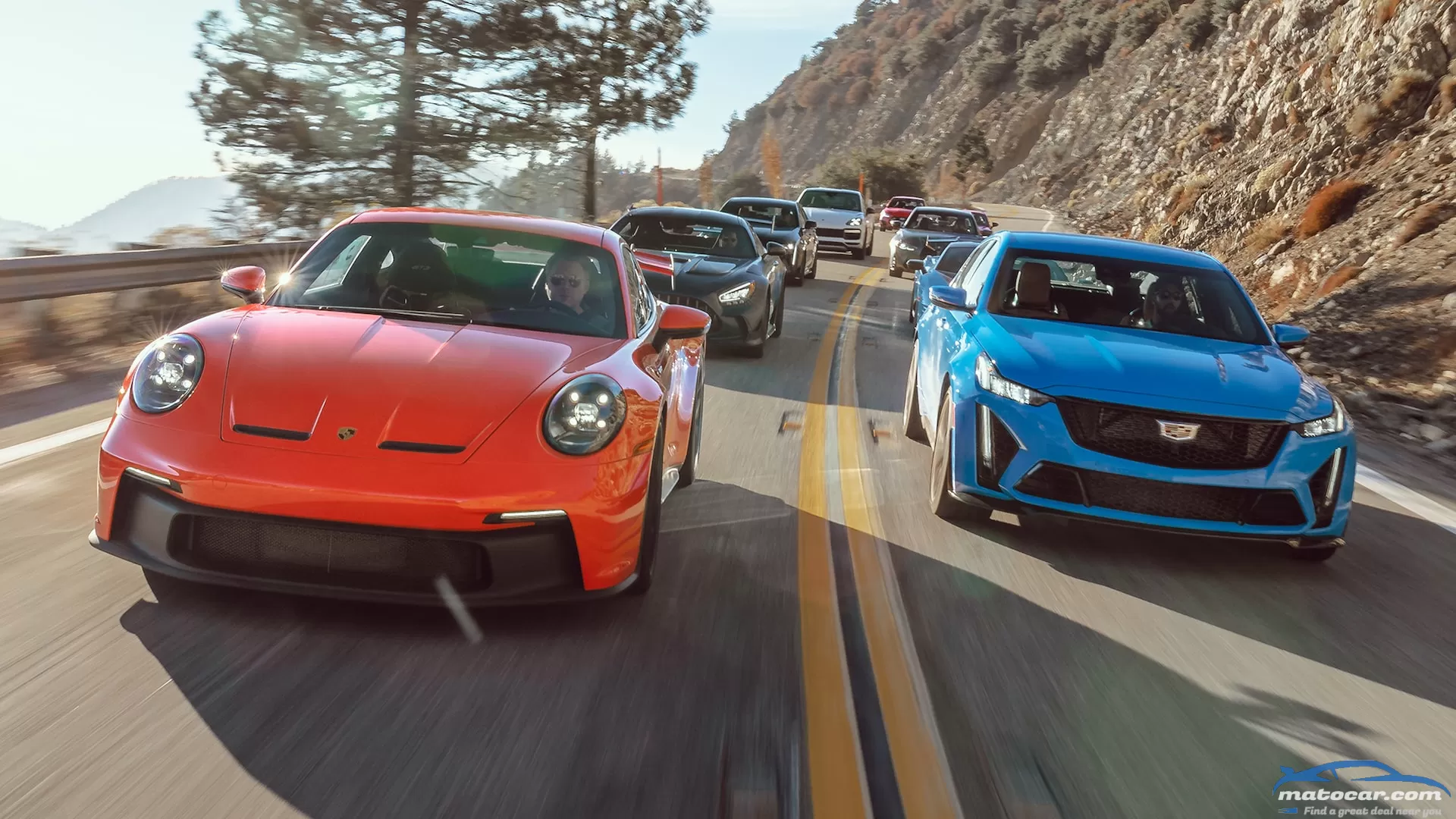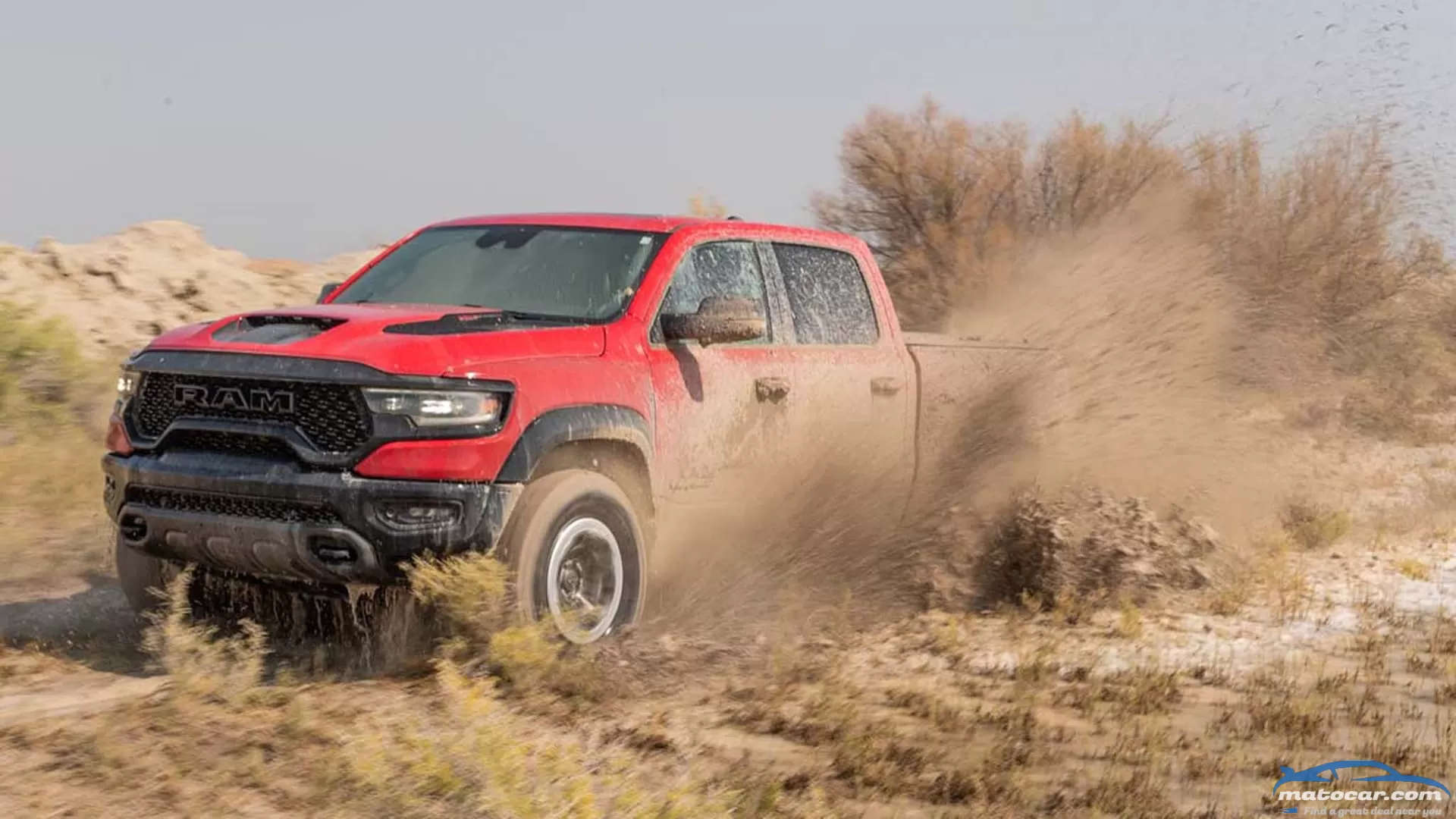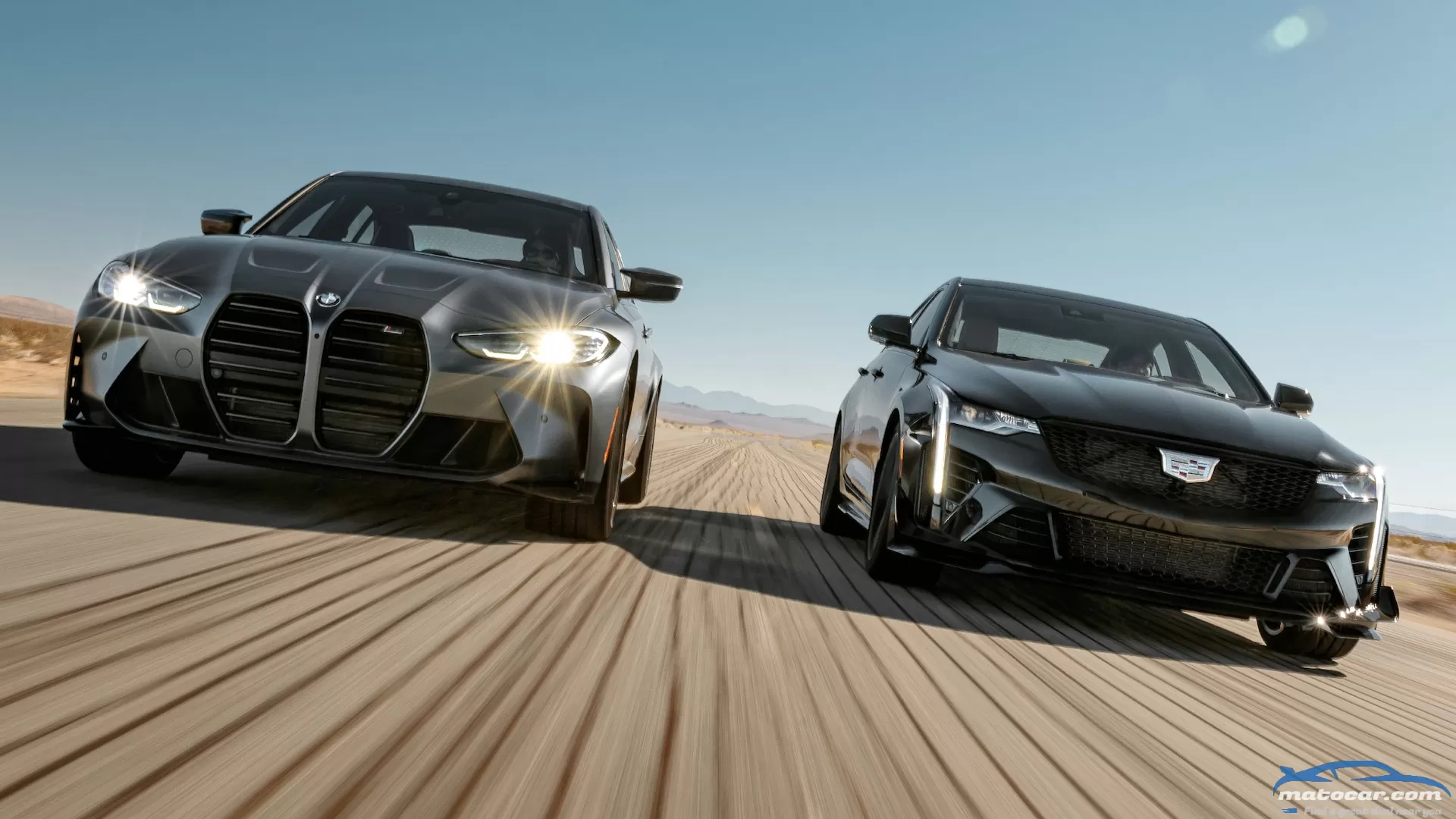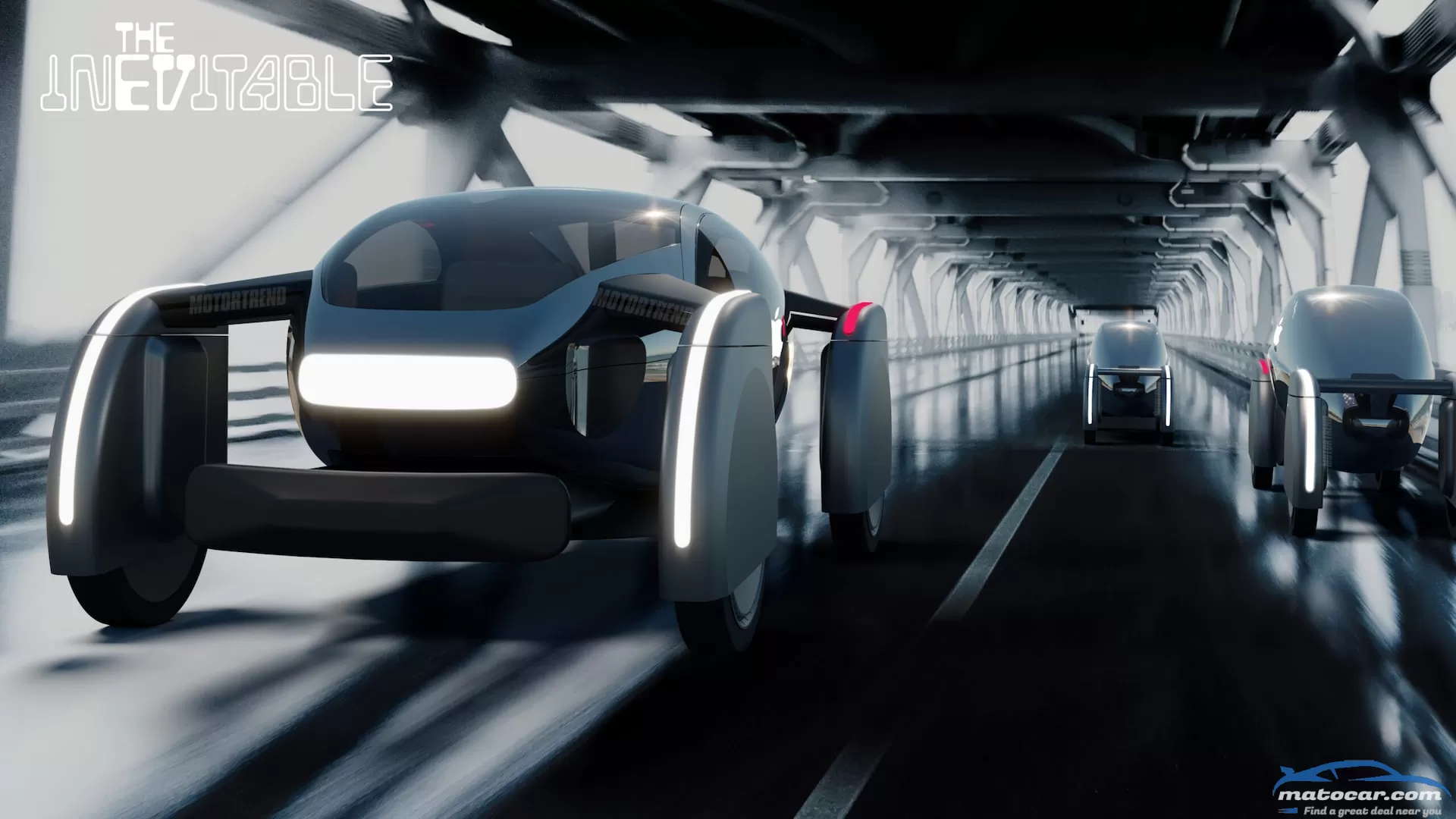2022 MatoCar Performance Vehicle of the Year: The Finalists

It's time to present the finalists for the inaugural MotorTrend Performance Vehicle of the Year. Yes, after running through our contenders—those rides that missed the cut for the final round of voting the PVOTY honors, we're introducing those that did make the finalist cut. One of these vehicles earned our Golden Calipers, having excelled in all six of our criteria (safety, value, advancement in design, engineering excellence, efficiency, and performance of intended function). The weighting of some of those criteria may differ slightly from our Car, Truck, and SUV of the Year competitions—after all, when outright performance is our focus, efficiency is perhaps graded on a curve—but every single one is considered when choosing our winner.
Read on to meet the first four members of our finalist field—the rest will be unveiled tomorrow—to represent the cars that made it out of our initial round of voting following evaluations at Hyundai's Proving Ground outside of Los Angeles. The finalists then went on to road drives on Angeles Crest Highway and, later, grueling track tests at Willow Springs Raceway. Come back on Monday, February 14 to see which one emerged with the title!
You may also like
ram 1500-trx Full OverviewTime slowed to a standstill by the point our long-term 2021 Ram 1500 TRX was about 50 yards into what I can only describe as a small lake. The initial forward momentum I'd enjoyed at the beginning of the mud bog dwindled into a crawl. The front end of the TRX slowly drifting towards the deep, mucky waters in the middle of the flooded field. Surrounded by the desolate flatlands west of Moab, Utah, and only on my third day of our 43-day epic electric trip across the Trans-America Trail, now was not the time nor place to get stuck. Or worse."No, no, please no, not that way!" I screamed into the empty cabin. In this frozen moment, my mind started to whirl with worst case scenarios. "If you're sinking in water, you're supposed to roll down the windows so you can swim out right?" "I'd better close my mouth if I need to swim out—who knows what kind of brain-eating amoeba lives in this cesspool?" "How are they going to get the truck out? A bulldozer? A crane?" "Should I bring my camera? My luggage? Whose fault is this? How did I eff this up?"As time froze, my mind went to how I got myself into this predicament.I've been a photographer with MotorTrend since 2008, and in my mind the Ram 1500 TRX represents the high water mark for gasoline powered truck. Powerful, capable, great to drive on-and off-road, and just an all-around badass of a vehicle. All of that being said, during the early stages of planning our Trans-America Trail Rivian R1T adventure, I was the most outspoken critic when it came to the idea of using our long-term TRX as our photography and video support vehicle.The Trans-America Trail was originally explored by Sam Correro on a motorcycle, and having done my fair share of off-roading, I can tell you that most trails are just not that wide. The TRX might be one of the best trucks ever made, but with a width of 88 inches, it's also one of the widest. I honestly thought that it just wouldn't fit on most trails— that'd we'd litter the trail with TRX mirrors, fender flares, and paint flecks as we made our way off-road from North Carolina to Oregon.At the time that we were planning the trip, the TRX was also new to the market. Sure, it might be based on a standard Ram 1500, but if we ended up breaking something on the trail, would a random dealership in rural America have the parts to get us back on the road? Would the technicians be trained to work on it? For me, questions like this sowed the seeds of doubt about bringing the TRX along.On top of that, there's the simple fact that photographers like myself prefer to use SUVs as our support vehicles. When photographers and videographers do action shots, it requires us to ride and shoot out of the back of a vehicle, and we like the open hatch of an SUV because it provides more shelter from the elements than the bed of a truck. Trucks also tend to have stiffer rear-suspensions than SUVs, which makes shooting out of the bed very uncomfortable.As the weeks rolled by and the plan congealed, it became more apparent that a truck was needed to support the two Rivian R1Ts. Other than hauling the photographer, videographer, and our accompanying gear, we would also need to bring luggage, and camping and off-road recovery gear. There is just nothing quite as useful as a pickup truck, and so the decision was made to bring our long-term TRX.It turns out, that was the right decision. My initial concerns about the TRX not fitting on some trails was proven correct with a couple of tight squeezes, but it ended up being a non-issue. It may have been the widest vehicle to ever tackle the perilous Black Bear Pass in Colorado, but it made it just the same. While early legs applied a layer of paint protection in the form of a hardened "candy shell" of mud that kept small branches at bay, before the third leg of the trip started, we applied a roll-on paint protector product to help minimize scratches. As you'll read in a future update, our Ram TRX didn't come through unscathed, but considering the terrain we encountered, and the abuse it weathered, the TRX took it like a champ.It also turns out that the same compliant suspension that makes the TRX such a monster off-road, provides a cushy ride for the photographer and videographer riding in the bed. Did it rain? Of course it rained. It also snowed, hailed, and the truck basically endured two months in a dust storm, courtesy of our position at the rear of the convoy, but we would've suffered those indignities no matter what vehicle we were in.Speaking of, that's how I found myself piloting the TRX towards our two R1Ts on the other side of the flood plain.Back in the truck, the seconds seemed to last minutes, my mind filled with images of disaster. In that moment of hopelessness, as the truck was sucked towards the mucky deep, the front wheels of the Ram grabbed a submerged but solid patch of ground. As the front-end bit, the TRX started to right itself. Reanimated by a spark of hope and adrenaline, I rolled into the throttle and the engine exploded to life with a bellicose roar. As the tires found traction, a rooster tail of mud shot skyward, and I started to make some headway. I wasn't out of the woods—err, water—yet, but as I slowly clawed forward, time restored itself to a normal speed.I floored the gas pedal, and I gripped tight on the steering wheel as the TRX's 702 horsepower uncorked. I won't say that I resorted to chanting, "I think I can, I think I can" like Thomas the Tank Engine, but every fiber of my soul was willing the TRX to dry land and the trail on the other side. As the water gave way to slick mud and grass, I started to breathe easier. I was wrong to doubt the TRX. In fact, I have never been happier to be so wrong. The TRX was the right vehicle to bring, and I will always be thankful that I didn't have to go for a swim.Looks good! More details?More on Our Yearlong 2021 Ram 1500 TRXAn Unusual Start For Our Ram 1500 TRXWhat's Faster: SRT Charger or the TRX That Towed It to the Track?If a Car Journalist Cuts Down a Tree in the Forest … ?Ram 1500 TRX vs Rivian R1T: The Impromptu Drag Race
It's time to present the finalists for the inaugural MotorTrend Performance Vehicle of the Year. Yes, after running through our contenders—those rides that missed the cut for the final round of voting the PVOTY honors, we're introducing those that did make the finalist cut. One of these vehicles earned our Golden Calipers, having excelled in all six of our criteria (safety, value, advancement in design, engineering excellence, efficiency, and performance of intended function). The weighting of some of those criteria may differ slightly from our Car, Truck, and SUV of the Year competitions—after all, when outright performance is our focus, efficiency is perhaps graded on a curve—but every single one is considered when choosing our winner.Read on to meet the first four members of our finalist field—the rest will be unveiled tomorrow—to represent the cars that made it out of our initial round of voting following evaluations at Hyundai's Proving Ground outside of Los Angeles. The finalists then went on to road drives on Angeles Crest Highway and, later, grueling track tests at Willow Springs Raceway. Come back on Monday, February 14 to see which one emerged with the title!
You laughed at us when we first imagined the Apple Car in 2016. "It's too podlike and not exciting enough to wear the Apple moniker," you complained.Look who's laughing now. The pod, for better or worse, is the future of automotive design. Just peek at the likes of the Canoo Lifestyle Vehicle or the Cruise Origin or the Amazon-backed Zoox, each of which essentially is a stylized passenger cell.The reasoning is simple: simplification. With compact electric motors instead of bulky internal combustion engines and no need for steering columns or gas and brake pedals, our projected autonomous future strips down the automobile to its most basic elements, a concept Apple has for decades applied to everything from cell phones to wristwatches.That said, pods need not look boring, which is why we went back to the drawing board and reimagined the Apple Car. Or should we say, cars.The Apple TouchIt may pain Apple fans to read this, but the company rarely creates truly original pieces of hardware. Its products instead tend to improve on existing concepts. For instance, Apple's earliest personal computers—the more rudimentary Apple I of 1976 and the more familiar-looking Apple II of 1977—were beaten to market by the likes of the Altair 8800 in 1975. Likewise, the first MP3 players and smartphones, the MPman F10 of 1998 and the IBM Simon Personal Communicator of 1994, went on sale years before Apple revealed the iPod (2001) and iPhone (2007).This is no knock against Apple's hardware, which with exceptions such as the Apple III is generally competent in its own right, but rather a commendation on the software environment the company created over the years. Credit the late Steve Jobs' decision to forgo licensing Apple's operating system to other hardware manufacturers, a strategy the company tried briefly in the mid-1990s during the reign of then-CEO Michael Spindler. (Jobs ended this process upon his return to Apple.)By maintaining integration between Apple's software and hardware, the company could "take responsibility for the user experience from end to end," as Walter Isaacson wrote in his 2011 book, Steve Jobs. Following Jobs' death in October 2011, Apple's current CEO, Tim Cook, regularly espouses the same beliefs."We love to integrate hardware, software, and services and find the intersection points of those because we think that's where the magic occurs … and we love to own the primary technology that's around that," Cook told Kara Swisher of The New York Times in response to a question regarding Apple's automotive ambitions.Recent Apple hires provide evidence the company continues to toy with the idea of fully developing its own car. The man said to be heading the program? Kevin Lynch, the executive responsible for turning the Apple Watch into one of the Cupertino, California, tech giant's core products. Lynch is much more a software developer than an automotive or autonomy engineer, but worry not.Over the past few years, Apple successfully recruited automotive industry talent such as Ulrich Kranz, former CEO of Canoo and former head of BMW's i division; Michael Schwekutsch, who previously served as Tesla's vice president of engineering; and Anton Uselmann, an engineer whose résumé includes stints at Mercedes-AMG and Porsche.Given Apple's nearly $2.9 trillion market cap (as of this writing), the company certainly has the means to develop and produce its own car. Nevertheless, developing and building an automobile is not the same as developing and building personal electronic devices such as computers, tablets, and smartphones. Or vacuums, as Dyson discovered when it attempted to mass produce its own electric vehicle.As company founder James Dyson revealed in his 2021 memoir, Invention: A Life, the company invested $700 million into its stillborn EV project, which it ultimately abandoned. Blame the various costs associated with the production and storage of a "relatively low-volume" vehicle Dyson intended to sell directly to consumers."[W]e would have [had] to sell the car at $210,000," Dyson wrote. "There are not many people who will buy a car at [that] price."The Apple Car(share) ProgramRumors persist that Apple plans to partner with an established automobile manufacturer to build its vehicle. Such a move may help Apple keep the per-unit costs reasonably low. How such a business relationship may affect Apple Car consumers is a different story.Although it's possible Apple decides to sell vehicles directly to the public, we hear it may ultimately pursue a car- or ride-share model, wherein Apple owns the vehicles and consumers pay to use them, à la Zipcar, with an autonomous twist. In this sense, then, Apple's model for its car program may more closely mirror Cruise's or Waymo's, wherein a user schedules one of Apple's autonomous electric vehicles to take them from Point A to Point B.We foresee riders being able to schedule recurring rides, too; just imagine an Apple Car showing up outside your door Monday-Friday to waft you off to work or shuttle the kids to school. If Apple goes this route, the company will likely—initially, at least—limit its vehicles' use to metropolitan areas where lower speeds and streets laid out in predictable grid patterns are the norms.Admittedly, we're working here with an assortment of crumbs we've gathered from sources and publicized leaks to come to this conclusion. Apple's car plans could take an entirely different route from what we're hypothesizing, or perhaps Cook and company will scrap the program altogether.Nonetheless, an autonomous car-sharing service seems the most sensible way for Apple to enter the automotive space. After all, there's a reason Alphabet created Waymo and why General Motors and Honda, not to mention others, invested in Cruise.Much like Apple's electronic devices, the company's potential crop of autonomous vehicles will likely rely on clean design, user-friendly ergonomics, and easy integration with Apple's various products to create a user experience distinct from those of competitors—and we think the company's CarPlay interface may play a key role.The Apple CarPlay PushToday, CarPlay largely serves to display and control Apple devices running certain iterations of the brand's mobile operating system, but tomorrow, CarPlay could effectively replace the native infotainment systems now used by automakers.Per a Bloomberg report, Apple is looking to take CarPlay to the next level as part of a project the company's working on, dubbed "IronHeart." If successful, IronHeart will reportedly give CarPlay access to control various vehicle settings, including the host car's climate, seat, and audio selections.Apple will likely struggle to convince automakers to let CarPlay control such features, but consumer demand for a more fluid experience between their personal vehicles and mobile devices could ultimately force carmakers to play ball. Little is known about the IronHeart project to those outside of Apple (and likely to many of those within Apple, as well). There's even a chance Apple has already scrapped IronHeart—assuming the project ever truly existed at all.Yet it makes sense for Apple to invest in a project such as IronHeart, if only to give drivers a more standardized user experience between the mobile devices they use and the cars they pilot. Cynics are sure to view IronHeart in a darker light as a way for Apple to collect pertinent information to use in the development of its own vehicle.This may be the case. Still, if our hunch is correct and Apple's car program takes on the form of a car-share service, then we think the company's intentions are far less nefarious. Rather, we wager Apple's goal for IronHeart is to turn CarPlay into a portable profile, allowing its autonomous cars to preemptively adjust comfort and convenience features to the individual preferences of a given passenger.The Apple Car ExperienceImagine the entirely possible future where, with few exceptions, private vehicles are banned from major metro areas such as San Francisco, New York City, and Chicago. Sure, you can take public transportation into the city, but you better hope your destination is located close to a train or bus stop.Alternatively, you can drive your personal car to an Apple Car pickup point located just outside the city. Once parked, the Apple Car you scheduled via your smartphone's app will whisk you away to your specific metropolitan destination with no driving required.An array of vehicle-mounted cameras and lidar sensors work with Apple's Maps app, which includes high-precision mapping of specific metropolitan areas, to help Apple's fleet of cars safely react to unforeseen obstacles, such as pedestrians and road debris. Additional peace of mind comes courtesy of the Apple Cars' vehicle-to-vehicle and vehicle-to-infrastructure communication systems, which allow the autonomous cars to wirelessly "communicate" with one another and the surrounding infrastructure. Energy-dense battery packs afford many hours of continuous operation.Although some users will lease a private Apple Car, most will subscribe to the service that allows them to use the company's fleet of shared autonomous vehicles. Apple Car lessees and subscribers will largely consist of individuals who frequently enter city centers that ban private vehicles.Those unable to or uninterested in justifying the cost of an Apple Car lease or subscription, however, will be able to pay to ride in one of these self-driving EVs on a single-use basis, provided there's a fleet car available for such use. If none is, then single-use customers may decide to forgo the familiar interface of the Apple Car for a readily available autonomous vehicle from a competitor such as Cruise, Waymo, or Zoox.In this hypothetical future, we foresee Apple introducing its automotive worldview with two models of autonomous vehicles for its users to catch a ride in: a larger, boxy multipurpose vehicle, dubbed the ePod, capable of carrying multiple passengers and their associated goods, and a smaller, single-seat option, better known as the ePod Solo. Down the line, there would be a whole fleet of offerings, ranging from eight-passenger vans to open-top sports cars.No matter the model, Apple Car users will need only pair their CarPlay profile to the vehicle, which then automatically adjusts the likes of the display interface, climate control, seat settings, and more to the individual rider's personal preferences. To increase profits, Apple will offer the option to unlock certain features for a small fee. This includes access to the Apple Arcade collection of mobile games, exclusive programming from Apple TV+, and even in-car workouts and meditations through Apple Fitness+.Is the Apple Car Really Coming Soon?Apple's automotive doings remain a moving target, and much about what the company intends to produce in this space has changed since we first imagined the tech giant's four-wheeled machine more than a half-decade ago. That said, the rumor mill indicates the company continues to tinker away at developing a vehicle—there's even chatter Apple targets a launch as early as 2025. In other words, it's only a matter of time until Apple vindicates or disproves everything we think we know about its car program, from the vehicle's (or vehicles') potential design to the whole operation's potential business model.




0 Comments